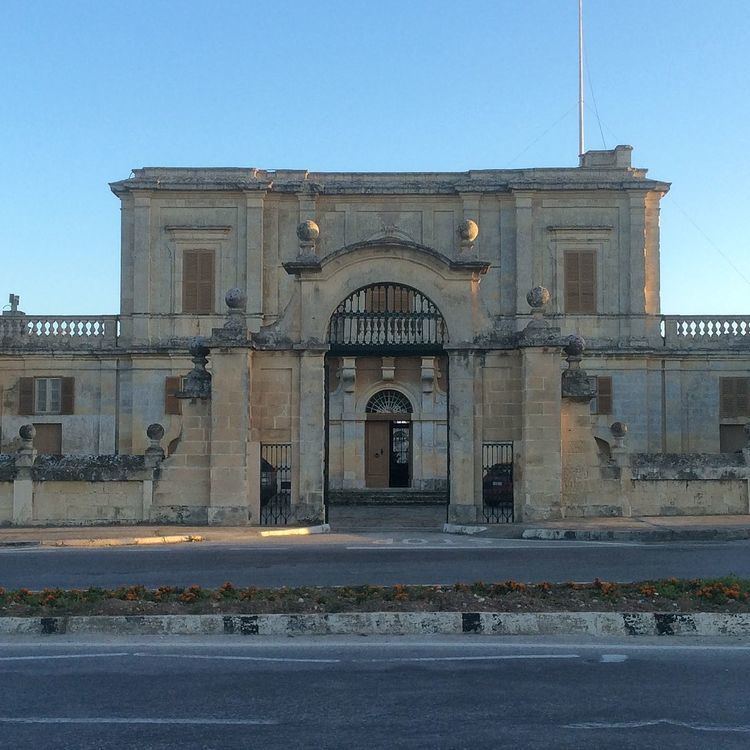Status Intact Opened 1670 Architectural style Baroque architecture | Type Hunting lodgePalace Completed 1670 Floors 2 | |
 | ||
Former names Bettina Palace, Villa Dorell, Villa Bettina, Palais d'Aurelle Named for Pietro Paolo Dorell Falzon Similar Comino, Stromboli, Montecristo, Mljet, Prvić | ||
Palazzo Dorell (French: Palais d'Aurel) also known as Bettina Palace, Villa Bettina, Villa Dorell (Villa d'Aurel), Xlejli Palace and among the nearby community as simply 'The Palace' (Il-Palazz), is a 17th-century Palladian palace located in Gudja, Malta.
Contents
- Map of Palazzo Dorell Vjal It Torri Gudja Malta
- History
- Gardens
- Modern
- Other Dorell residences
- References
Map of Palazzo Dorell, Vjal It-Torri, Gudja, Malta
History
The property was built during the Order of St. John by Count Ignatius Francesco Moscati Falsoni Navarra as a family home and country residence in 1670. The palace was bought in 1760 by Pietro Paolo Falzon d'Aurelle (English: Dorell) Falzon, and is interchangeably named for him and his daughter Marchesa Lady Bettina Testaferrata Dorell.
The palace served as the headquarters for the British forces, under General Graham, during the French blockade (1798–1800).
Gardens
The Xlejli Tower and a chapel are located inside the walled private gardens of the property. At the garden one can still find a small cemetery where British armymen who died during the French occupation of Malta are buried.
Modern
Today the palace is a private residence and is not open to the public.
The palace is scheduled as a grade 1 national monument by the Malta Environment and Planning Authority (MEPA) and listed as part of the National Inventory of the Cultural Property of the Maltese Islands (NICPMI).
Other Dorell residences
The aristocratic French family d'Aurelle had other notable properties in Malta. The palace should not be confused with Palazzo Bettina in Birgu, nor Casa Dorell in Valletta; which both belonged to the same family once.
